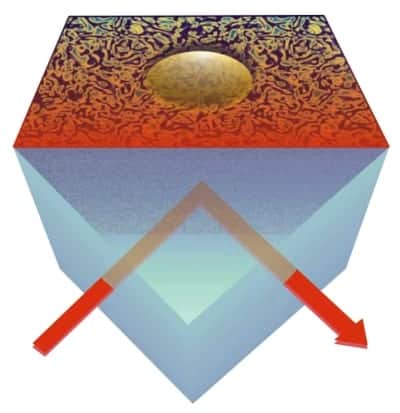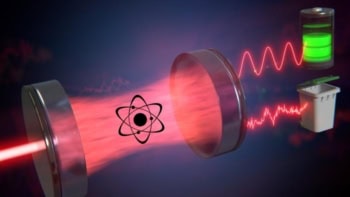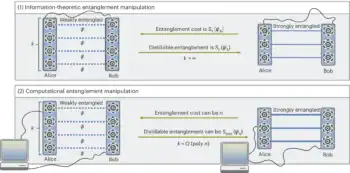
Physicists in Germany have made the first direct measurements of the “critical Casimir effect”, a classical analogue of the strange quantum effect that draws two conducting surfaces together in a vacuum. They also say that the classical effect can be easily tuned to repel rather than attract for reducing undesirable friction in nanomachines.
The quantum Casimir effect comes about because a vacuum always contains fluctuating electromagnetic fields. Normally these fluctuations are roughly the same everywhere, but two close conducting surfaces set “boundary conditions” that limit the number of allowed field frequencies between them. Only waves that can fit multiples of half a wavelength between the surfaces resonate, leaving non-resonating frequencies suppressed. The result is that the total field inside a gap between conductors cannot produce enough pressure to match that from outside, so the surfaces are pushed together.
The critical Casimir effect has the same underlying principle, but is a classical phenomenon that arises in a mixed liquid close to its critical point — the point, defined by a threshold temperature and pressure, beyond which the gas and liquid phases are indistinguishable. A mixed liquid taken towards its critical point gradually begins to separate into regions of its constituent substances, the size and shape of which fluctuate like the quantum fields in a vacuum. And, like the quantum Casimir effect, two close surfaces in such a liquid set boundary conditions, this time by preferring to be in contact with one of the substances over the other. To fulfil these conditions, the surfaces attempt to surround a single region of the preferred substance by drawing together.
‘Softest spring’
In our experiment there is probably the softest spring imaginable Clemens Bechinger, University of Stuttgart
Predicted in 1978 by Michael Fisher and the late Pierre-Gilles de Gennes, the critical Casimir effect has until now only been glimpsed indirectly because no one has perfected a technique that is sensitive enough. Atomic force microscopy has been one possibility, but the cantilevers are too hard. Clemens Bechinger and colleagues from the University of Stuttgart have got around the problem with a technique called total internal reflection microscopy, which can detect forces down to one femtonewton (10–15 N). “In our experiment there is no cantilever at all, which is probably the softest spring imaginable,” says Bechinger.
Using this technique, the Stuttgart team can measure the attraction of a 3 µm-diameter polystyrene ball to the inside surface of a glass filled with water and the oil 2,6-lutidine, a mixture that has its critical point at a convenient 34 °C. They begin by shining a laser at a sharp angle onto the outside of the glass, which reflects leaving only fast-decaying “evanescent” light leaking through to the inside. Next, they measure the amount that the ball scatters this evanescent light back to a photon counter to tell how the distance between it and the glass changes.
Because the ball is constantly bombarded by molecules in the liquid, the researchers have to use statistical analysis to distinguish the sudden movements towards the glass that result from the critical Casimir effect. From these displacements they calculated the effect of the force as about 600 fN (Nature 451 172).
Reverse effect
I am not sure if people want to have such mixtures inside their NEMS Astrid Lambrecht, Kastler Brossel Laboratory
The ball attracts to the glass surface because Bechinger and colleagues coated both of them to both prefer contact with either oil or water. However, they also found that they could turn the attraction into repulsion by giving the surfaces opposite preferences. In this scenario, the surfaces need to move apart to accommodate two different regions. Bechinger says this reverse critical Casimir effect could be useful in nanoelectromechanical systems (NEMS) for reducing the friction caused by the quantum Casimir effect.
“The effect is very interesting and its observation is certainly important,” Astrid Lambrecht, a physicist from the Kastler Brossel Laboratory in Paris, France told physicsworld.com. “It can potentially have applications in nanotechnology, but far as applications in NEMS are concerned I am not sure if people want to have such mixtures inside their NEMS, especially as the mixture properties depend on the temperature.”


